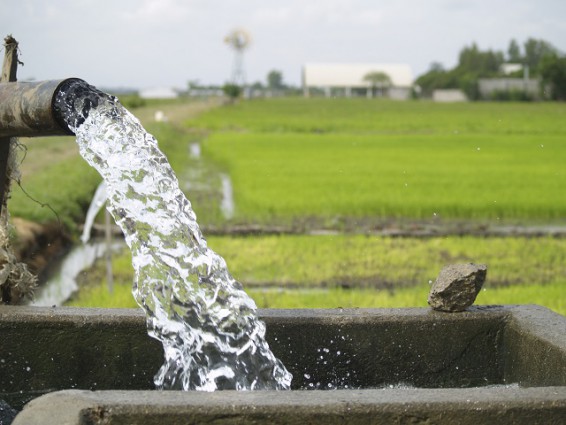Philippine Rice Research Institute (PhilRice) urges farmers to adopt technologies that will help them cope with the weak El Niño, which started in November 2018 and is forecasted to end in June this year.
Farmers in irrigated areas are advised to use water efficiently so it can reach tail-end areas in the irrigation system. They are encouraged to practice controlled irrigation, which can reduce water use by around 16-35% without reducing yield.
“This technology is aided with an observation well used in monitoring water levels. It’s time to irrigate when the water level hits 15 cm below ground level,” Fredierick Saludez, PhilRice agriculturist said.
While PhilRice experts recommend fallow period every cropping season, in times of drought, they encourage farmers with stable water supply to plant rice immediately after harvest.
Dr. Eduardo Jimmy P. Quilang of PhilRice Agronomy, Soils, and Plant Physiology Division, said the practice, called “quick turn around (QTA),” has to be done in synchrony within a community.
“QTA is advised to ensure enough rice supply amidst the dry spell. In doing this, however, synchronous planting is strongly recommended to prevent pest outbreak. Thus, this has to be well-coordinated with the National Irrigation Administration,” he said.
To reduce production time by an average of 10 days, direct seeding is recommended. Farmers are then advised to use 60-80kg/ha.
In areas with limited water supply, Dr. Ricardo Orge, program leader of Climate Resiliency for Enhanced Agricultural Trade and Efficiency for Rice (CREATE-Rice) Program, advised farmers to diversify from rice.
“If it’s already too risky to plant rice, farmers may consider planting short-duration crops instead. We suggest high-value crops requiring less water use such as watermelon. Farmers may also focus on tending livestock,” the scientist said.
With El Niño occurring in the Pacific basin every 2-9 years, PhilRice plant breeders reminded rice farmers to be prepared by planting drought-resistant varieties such as PSB Rc 10, NSIC Rc130, and NSIC Rc 134. These varieties can be harvested within 104-110 days.
NSIC Rc 192, PSB Rc 14, and PSB Rc 68, which can harvest up to 5.5 t/ha, are adaptable in rainfed areas while PSB Rc 9 and NSIC Rc 23 are suitable in the upland ecosystem.
Farmers with water source can also try the Aerobic Rice Technology, which requires irrigation at 2-5 cm every week.
Farmers are also encouraged to avail of farm insurance to protect their crops from natural calamities.
They are also advised to be updated on climate and weather forecasts from PAGASA and to contact the PhilRice Text Center, 0917-111-7423, to know more about the El Niño technologies.
In his social media page, Department of Agriculture Sec. Manny Pinol said about 8,000 farmers are currently affected by this year’s dry spell. Affected provinces include Occidental Mindoro, Zamboanga del Sur, Zamboanga Sibugay, Misamis Oriental, Davao del Sur, Cotabato, and Maguindanao.
The secretary also said the department has coordinated with local government units and other key stakeholders, positioned pumps and engine-sets for water distribution in tail-end areas, released crop insurance payments to insured farmlands, and prepositioned seed reserves for rice and corn”.





